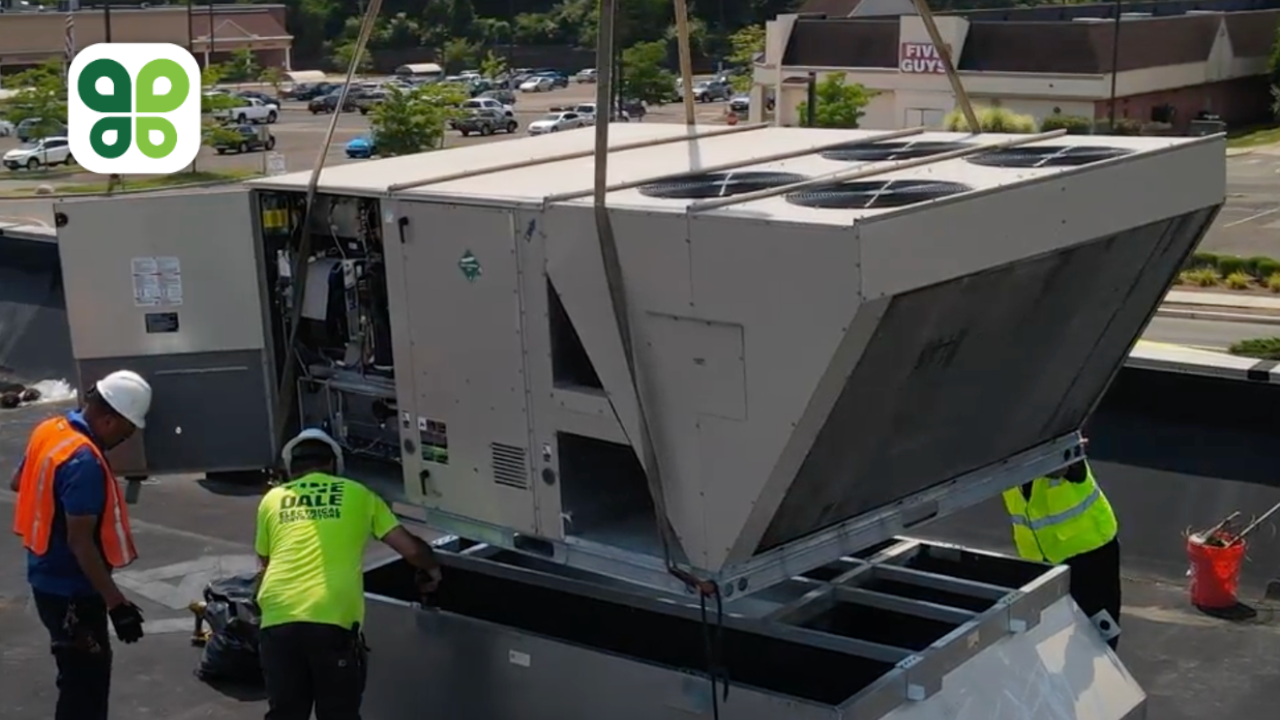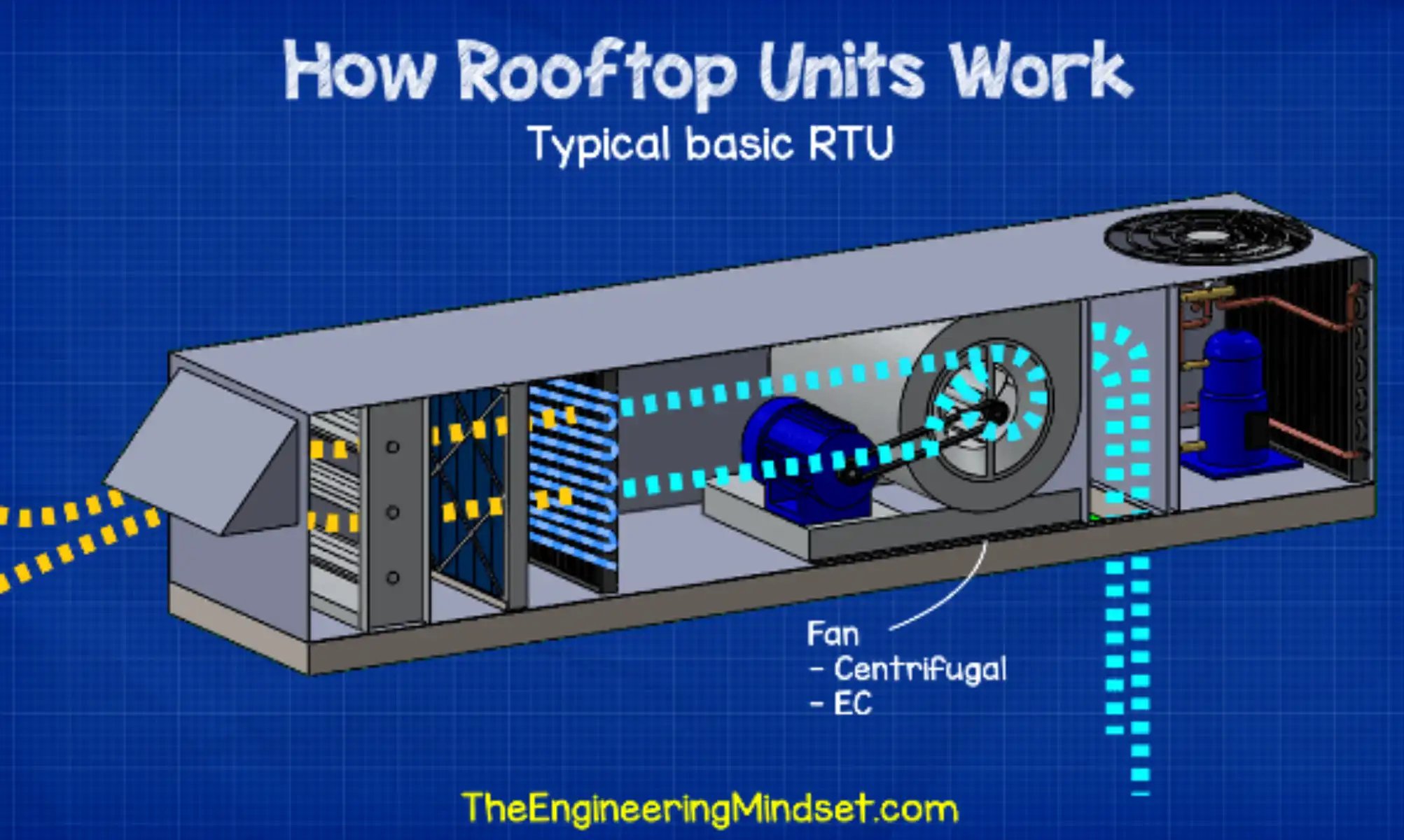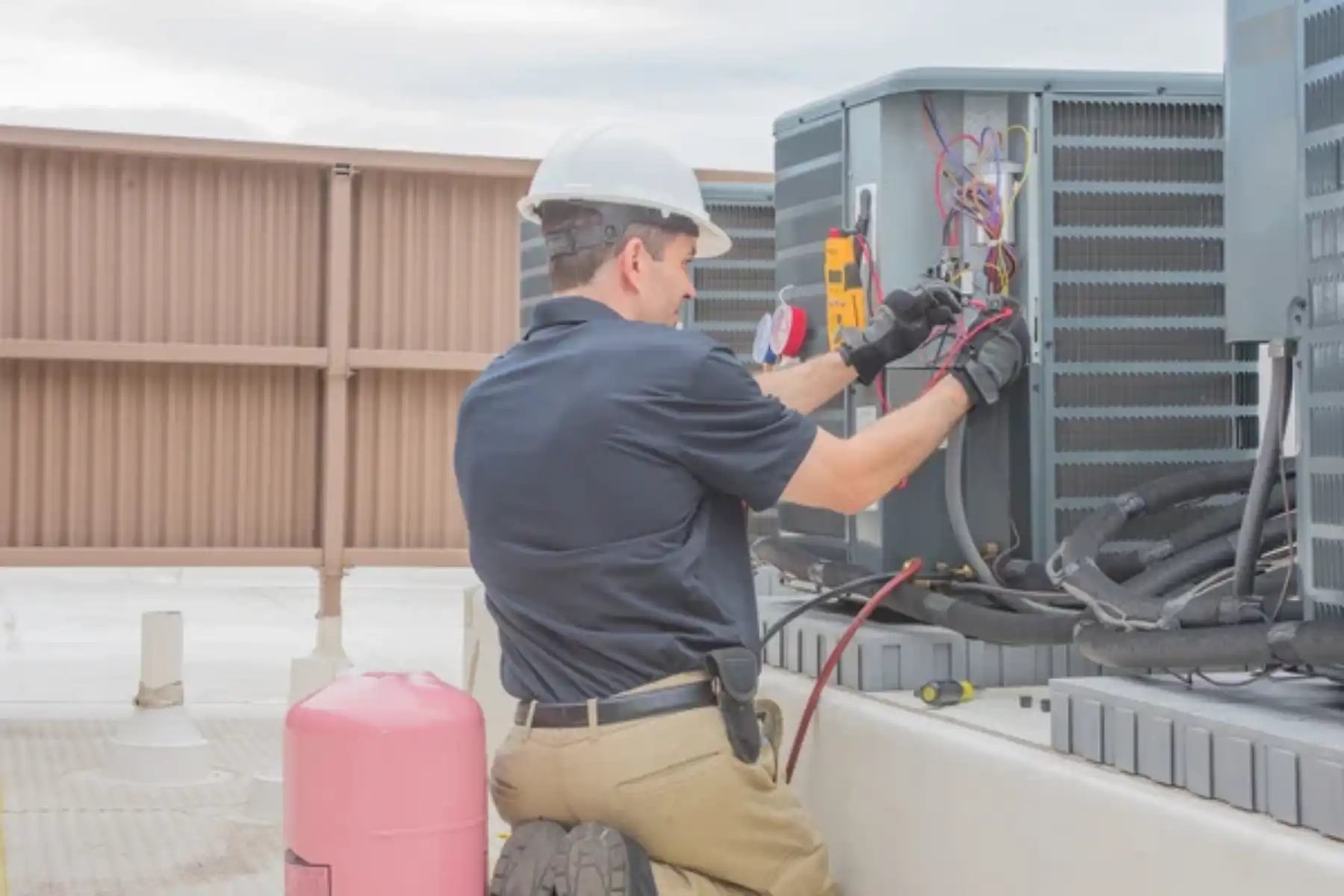
How Do Rooftop HVAC Units Work?
What Is a Rooftop HVAC Unit?
Shopping around for a new heating, ventilation, and air conditioning (HVAC) unit for your business can be a challenge, as you have to consider a range of factors such as appearance, space, and ease of access. One of the first solutions you might consider for all of these problems is a rooftop HVAC.
Rooftop HVAC units are valued, especially in the restaurant space, for being able to be installed (and easily maintained) on a roof. This helps improve the restaurant’s overall appearance by hiding bulky energy equipment, and keeps essential equipment in one central location.
Rooftop HVAC units (RTUs) heat and cool specific locations in residential or commercial buildings. Units come as easy-to-install pre-assembled packages.
Before you decide to install an RTU, it’s important to do your research. To help you make an informed decision, you’ll learn more about RTUs, how they work, and their pros and cons.
What Makes Rooftop HVAC Unique?
Before we begin explaining how rooftop units work, let’s break down what a rooftop HVAC is.
As the name suggests, they’re typically installed on roofs, but they can sometimes still work at ground level if you have sufficient space and a flat, even surface. What makes them unique is how all of their equipment is packaged into one cabinet.
Split system HVAC units, on the other hand, hold their equipment in multiple locations, usually both indoors and outdoors. Considering this description, packaged rooftop units are convenient to repair in the event of a breakdown. Instead of needing to move to repair multiple parts, everything is in one place.
How Do Rooftop HVAC Units Work?
As its name suggests, HVAC rooftop units include heating, venting and air conditioning features. RTUs with both functions perform two different processes to keep your building heated and cooled. Below are the steps that make each unit work.
Cooling
Let’s take a look at how your business’s HVAC cools and heats. With this information, you can better understand how you can reduce energy usage with energy-efficient HVACs:
- The HVAC unit collects inside air with its air hood.
- Refrigerant enters the compressor as a gas. It’s then compressed into a high-pressure gas before it goes to the condenser coil.
- This high-pressure gas is hot, so metal fins on the coil absorb the heat and blow exhaust away from the building.
- Once it cools off, the gas becomes a liquid. This liquid flows to the evaporator coil.
- In the evaporator coil, the liquid becomes gas again.
- Collected air passes through the unit’s filter to remove debris.
- Filtered air goes to the evaporator coil and the cool refrigerant gas absorbs the warmth.
- Cool conditioned air flows into the building and the warmed refrigerant is disposed of as exhaust.

Source: The Engineering Mindset
Heating
- The air hood collects air.
- The air filters clear out any debris.
- Air flows to the heat exchangers.
- The heat exchanger uses warm gas from the burners to heat the air.
- Return air cycles through the ductwork for recycling or disposal as exhaust.
- Warm air circulates throughout the building.
Some residential buildings have RTUs, but you’re much more likely to find one on a commercial rooftop. This is because they’re more expensive than other HVAC systems and you need a crane to transport them. Additionally, only specialized technicians can install them.

Credit: spatesphoto
Pros and Cons of Rooftop HVAC
Rooftop HVACs are often the ideal solution for businesses. Rooftop units help businesses save space and are more easy to access for technicians who need to work on them. Take a look at our list of the pros and cons of rooftop HVAC and consider if it’s the right choice for your business.
Pros
- Save Space & Business Appearance
RTus are a great HVAC solution because they're compact. As a result, your business gets significantly more floor and outdoor space than you would with other systems.
A restaurant could use this for more patio dining. You could also give your employees outdoor green space for breaks, which boosts mental health.
And with the additional outdoor space, you’re keeping the appearance of your business in top shape—there’s no bulky equipment to interrupt foot traffic or distract from the look of your space. - Reduce Noise
It’s no secret that HVAC is loud. Noisy internal units can disturb your customers and have a negative impact on employee well-being. RTUs aren’t quieter, but when you put everything on your rooftop, people are spared hearing loud noise.
Bear in mind that no HVAC unit should be excessively noisy. A consistent background hum is normal, but if they’re very loud that could indicate a problem. - Out-of-Sight Maintenance
If you need repairs, out-of-sight maintenance crews are less likely to disturb patrons. If your HVAC needs to be fixed in the middle of dinner rush hour, for example, your team of technicians will be working on the roof and from their truck—not disrupt the dining experience. - Energy Efficiency
The US Department of Energy estimates that American commercial buildings annually consume a combined 1.4 quads of primary energy on cooling and 1.7 quads of primary energy on heating. For reference, 1 quad of energy equals 293 billion kilowatt-hours.
Your business’s contribution to this energy total can be reduced with energy-efficient equipment.
Each component in an RTU package is optimized for efficient performance. Some units also let you customize energy usage with adjustable air volume controls and thermostats.
Furthermore, an RTU that meets High Performance Rooftop Unit Specification standards reduces overall energy consumption by approximately 40-50%. - Cleaner Air
Generally, RTUs are less exposed to dirt, dust, and debris from the ground. So, they experience fewer clogs and less strain on their filters. As a result, you’ll get cleaner air entering your building.
This doesn’t mean you’ll never have to clean your RTU. You just may not need to do it as often as you would with another system.
Cons
- They're Heavy
Having everything in one cabinet is a big selling point. The issue is that this increases the unit’s weight. That’s why cranes and specialized technicians are needed to install one.
You also need to make sure your building’s infrastructure can handle the weight. If your roof isn’t strong enough, it could crack and cause water leaks. - Weather Exposure
One of the cons of RTUs is how they’re exposed to the weather. Snow, rain, and wind cause wear and tear as the unit sits on the roof.
Additionally, these rooftop units are metal, causing concern that they attract lightning. This concern hasn’t gone unnoticed. Rooftop HVAC lightning protection equipment is available on the market.
Direct sunlight can also impact your system’s efficiency. This is because the hot sun makes it harder for your unit to cool off its air. If your region gets very hot, this extra effort can increase your air conditioning bill by up to 10% per month.
You can reduce this by giving your unit shade. - They Only Cover So Much Space
RTUs don’t work as well for buildings that are more than 10 stories tall. The air handler must be able to circulate air through your ductwork. In large buildings with a lot of ductwork, it’s difficult for your unit to deliver the same quality air everywhere.
|
Learn more: |
Transform Your Commercial HVAC System with Budderfly
If you think RTUs are right for you, upgrade to energy-efficient ones at no upfront cost with Budderfly. Trusted by businesses across the U.S., our industry-leading team of commercial energy management experts can provide guidance about how you can make the most of an RTU system with a free energy assessment.
Contact us to get started.

